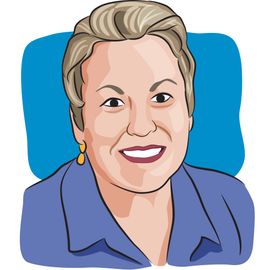- About Us
- Advertise / Support
- Editorial Board
- Contact Us
- CancerNetwork.com
- TargetedOnc.com
- OncLive.com
- OncNursingNews.com
- Terms & Conditions
- Privacy
- Do Not Sell My Information
- Washington My Health My Data
© 2025 MJH Life Sciences™ and CURE - Oncology & Cancer News for Patients & Caregivers. All rights reserved.
Finding Hope During The Cancer Journey

Kathy LaTour is a breast cancer survivor, author of The Breast Cancer Companion and co-founder of CURE magazine. While cancer did not take her life, she has given it willingly to educate, empower and enlighten the newly diagnosed and those who care for them.
Hope is a tenuous thing, but it is important to foster hope during the cancer journey even when the statistic don't feel hopeful.
I have a friend who has lost confidence in the healthcare system.
She says she is going to Mexico to be cured. After her first visit to a clinic across the border, she told me that her doctors in the United States didn’t give her any hope — the clinic in Mexico was filled with it. She knew she was dying but told me that she would rather die with hope than without it.
Why are doctors surprised that we seek shamans and miracles when some are so reluctant to say anything that might be construed as hope for a healthy future? This is particularly true now that we know a person’s mental state can impact their physical one.
Sure, their work is based on statistics and outcomes, but when will they learn that if they deliver that information with a little humanity —make us feel like they actually care if we get well, we might feel more positive. Instead they worry about being too positive for fear of many things. Are we expecting too much from doctors since they were trained in science?
The truth can be brutal — that’s why we run from it. But why can’t there be something more in medical science when the statistics are so bad, something that will nurture us to heal when we can’t have a cure. It’s what I find in support groups – caring. It’s offered in the psychosocial support we receive, the positive input we should be getting but aren’t.
I heard a rather long discussion about something called “false hope.” Evidently this is what doctors offer when they say positive things about the future knowing full well that there may not be one. But can’t qualify or quantify hope, so how can it be false?
When will doctors see that they are only half of what we need? The other half is the heart part, the place where someone gets to know us not as tumor but as people with hopes and dreams and plans.
Researcher Barbara Anderson, PhD, created a stress reduction program aimed at improving feelings of hope by reducing stress.
Patients are taught how to think about stress as well as communicate with doctors and others about their treatment, seek social support, become physically active and take other actions to reduce stress. Together these actions reduce stress, improve their mood and enhance their quality of life.
And how is this negative? It isn’t and it has been shown to improve patients sense of well-being, which is all anyone wants.
Related Content:



